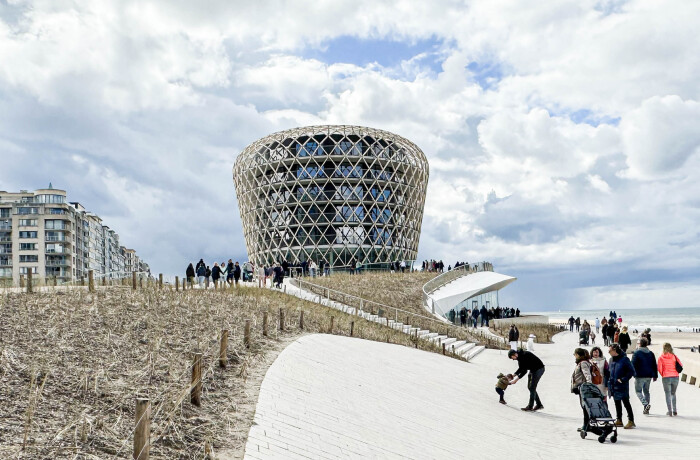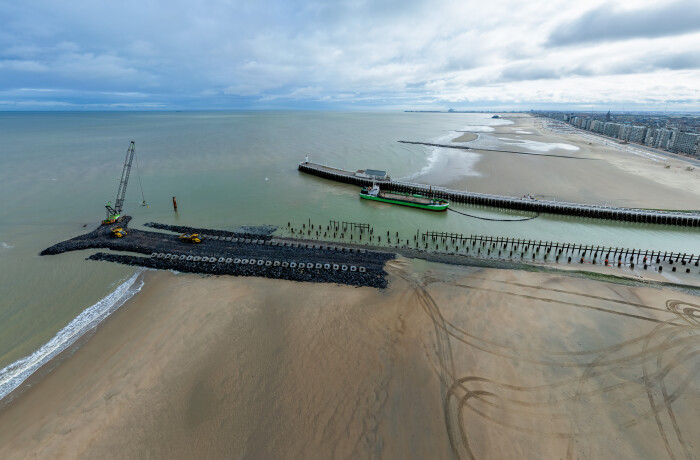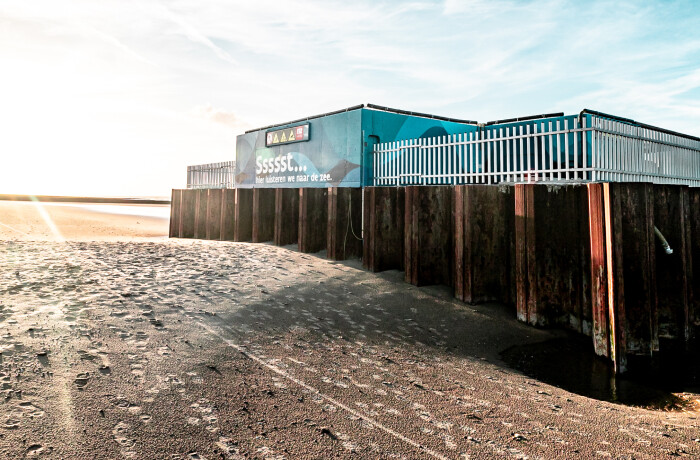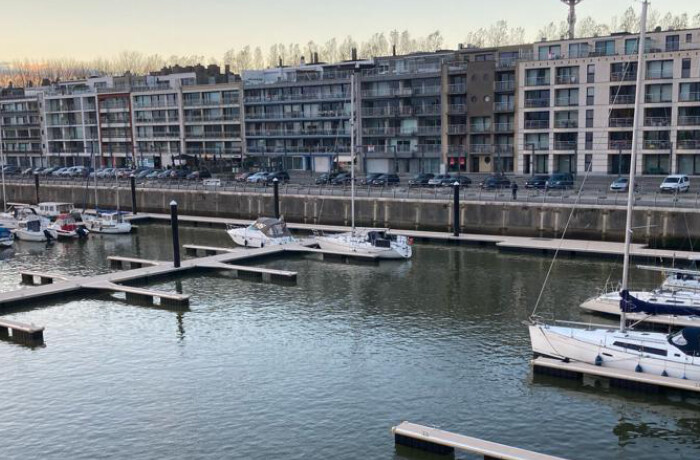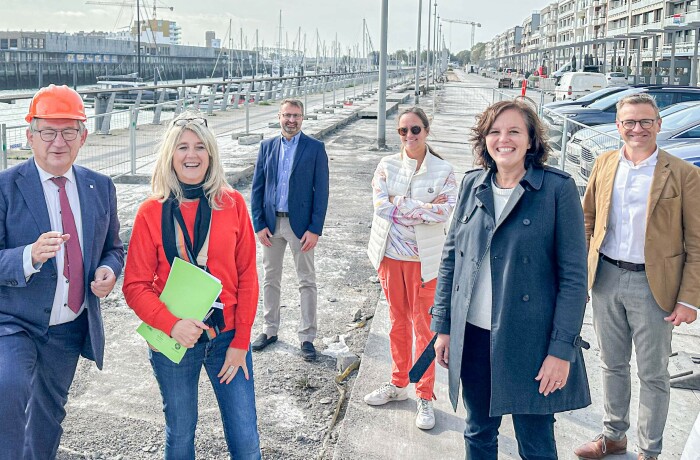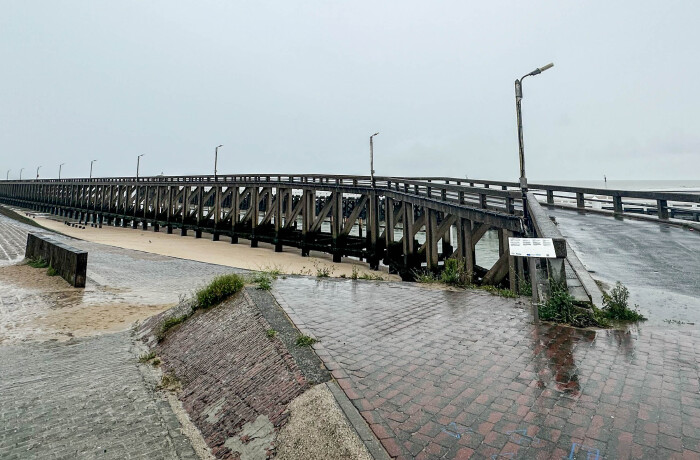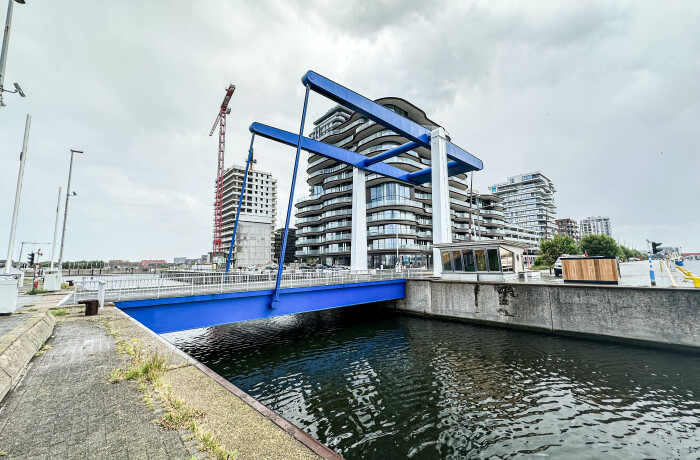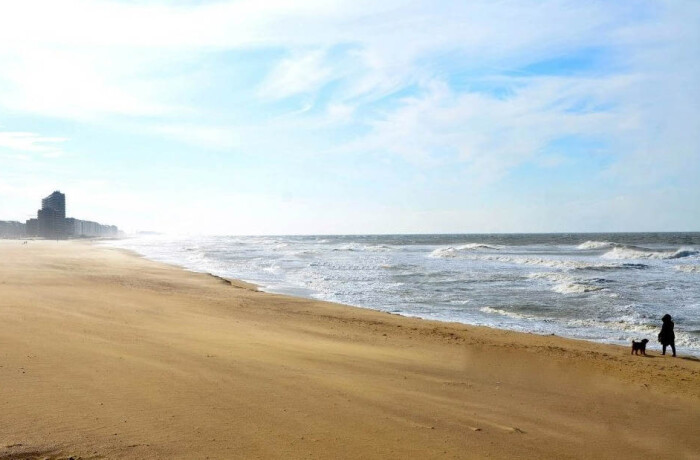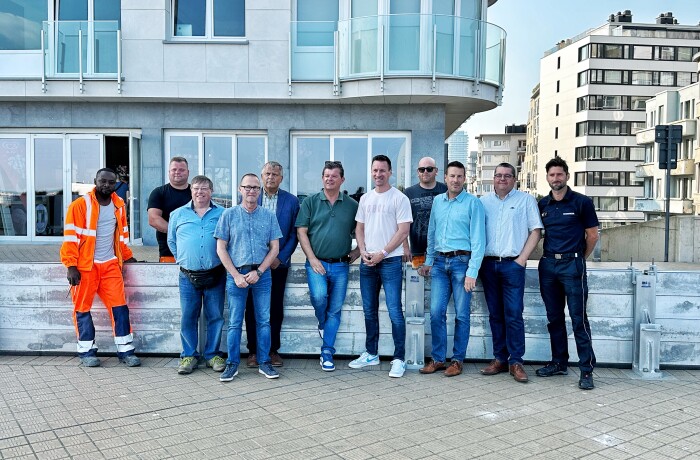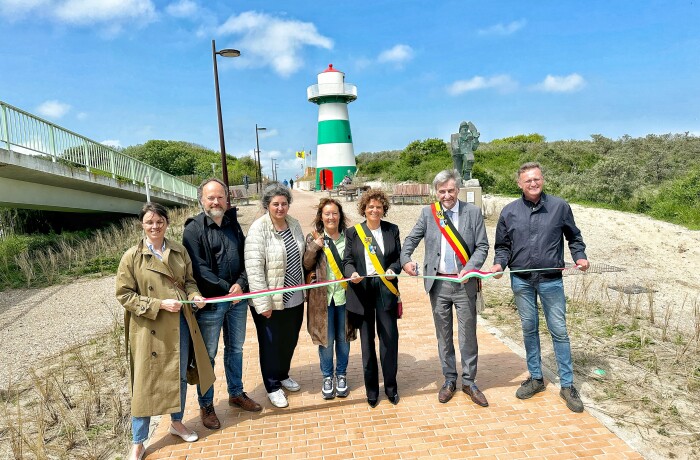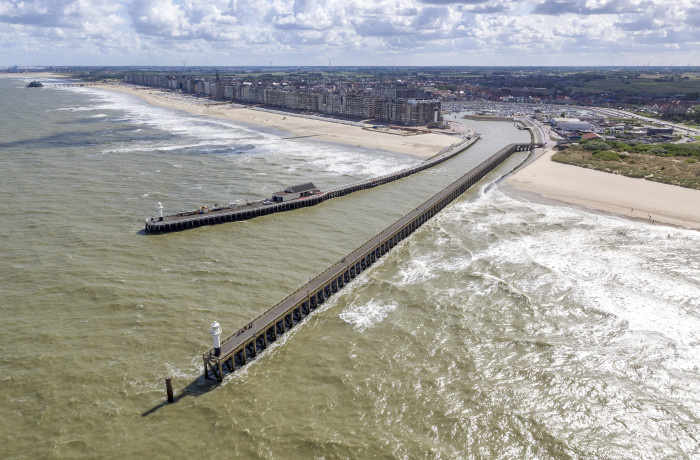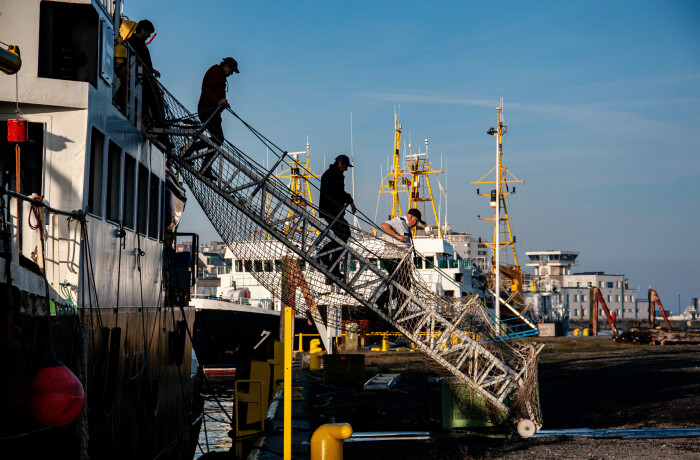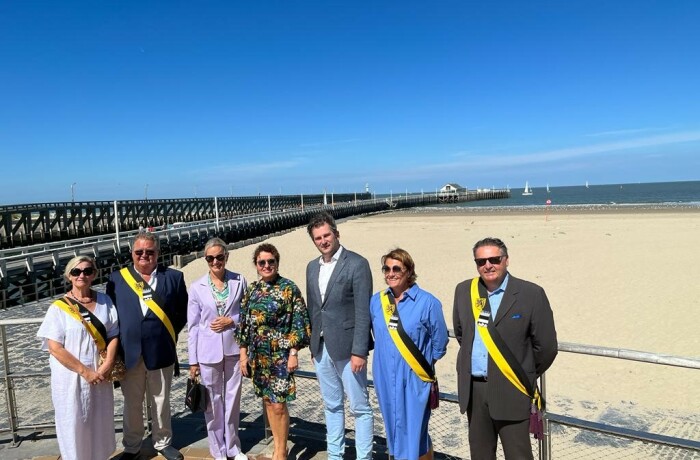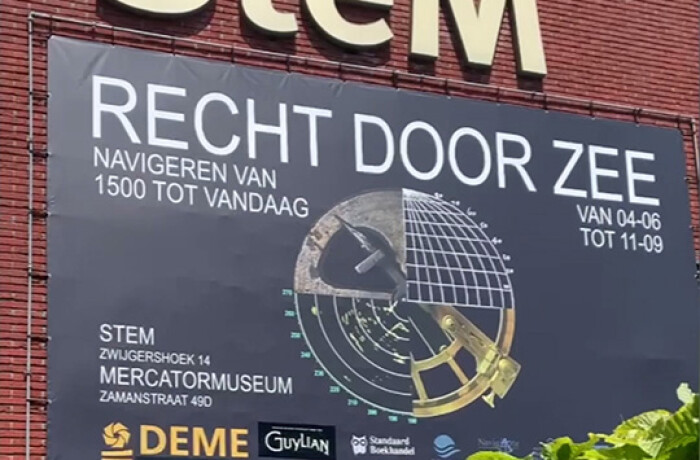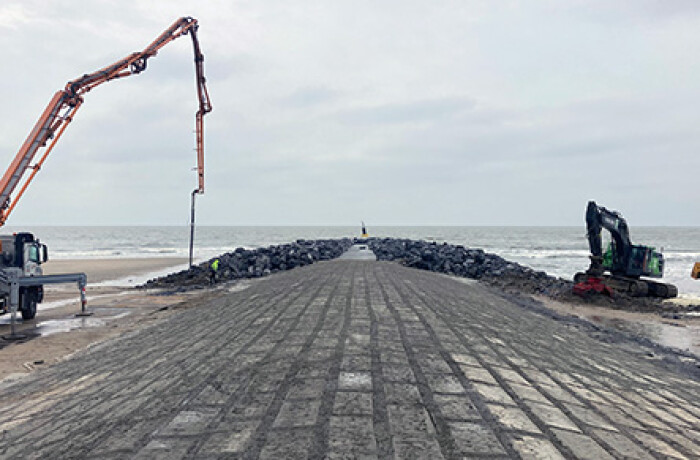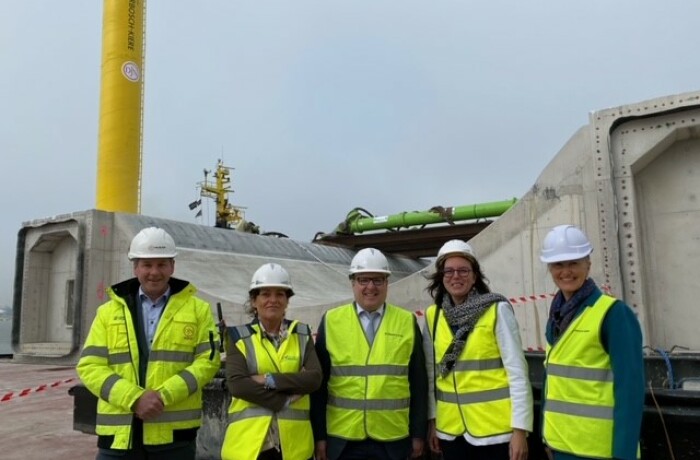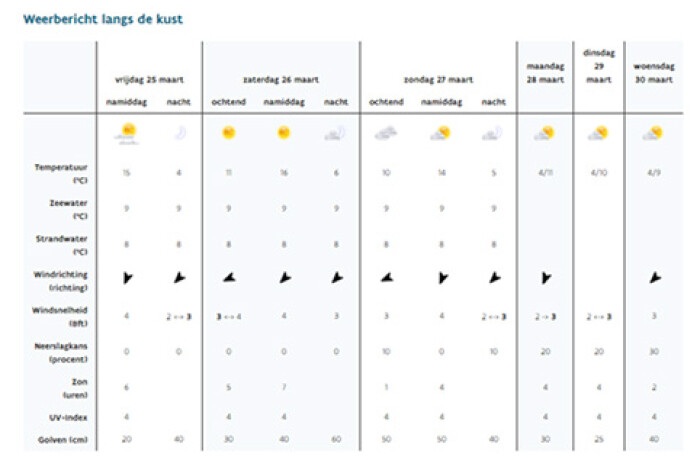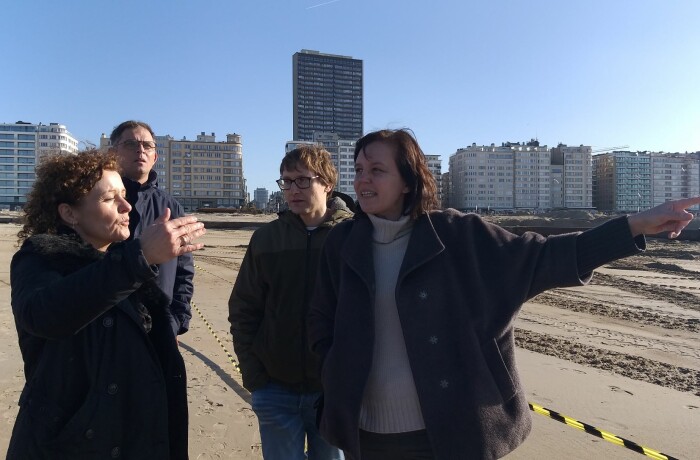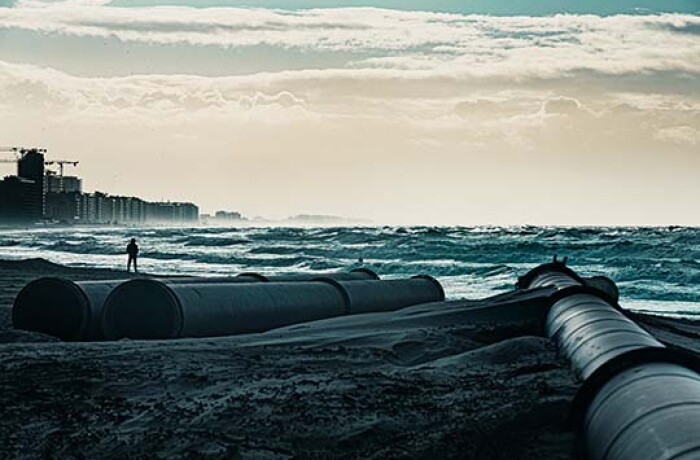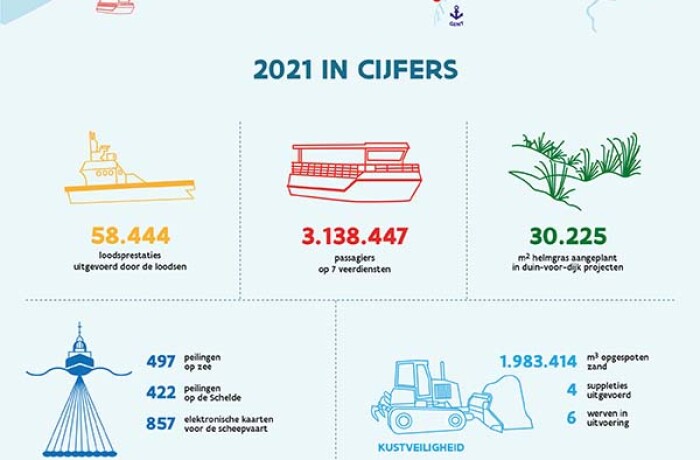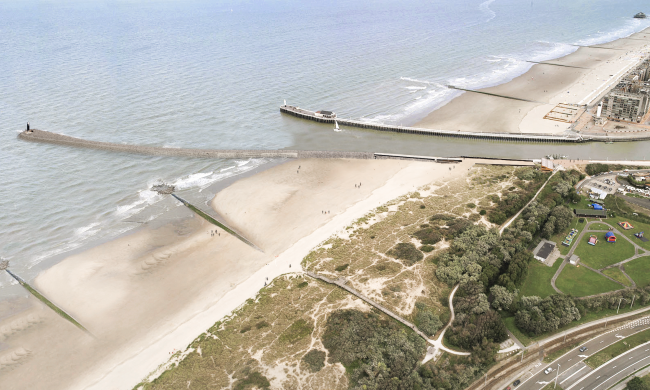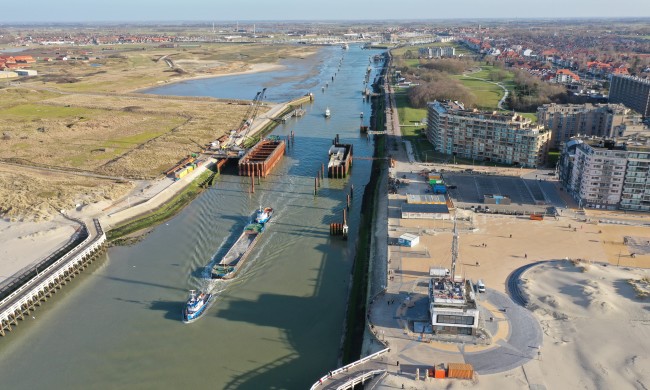Kust
De afdeling beschermt de bevolking tegen het geweld van de zee en bevordert de recreatie op en naast het water en het beleven van de kust. Het team Vlaamse Hydrografie draagt bij aan een vlotte en veilige scheepvaart door de zee- en Scheldebodem in kaart te brengen en te zorgen voor een accuraat kustweerbericht.
Wat doen we?
Zeewering en kustbeheer
Afdeling Kust beschermt onze kust tegen stormvloeden en de gevolgen van de stijgende zeespiegel en het veranderende klimaat. Dat kan gaan om zandsuppleties, stormmuren of de bouw van een stormvloedkering. Een van onze topopdrachten is de realisatie van het Masterplan Kustveiligheid.
Watersport en -recreatie
Onze afdeling bouwt en onderhoudt de basisinfrastructuur in de kustjachthavens van Nieuwpoort, Oostende, Blankenberge en Zeebrugge. Zo helpen we mee hun toeristisch-recreatieve en economische waarde te behouden.
Vlaamse Hydrografie
Het team Vlaamse Hydrografie voert peilingen uit van de zeebodem en de Schelde en lokaliseert daarnaast ook wrakken. Onze medewerkers brengen al die informatie samen op zee- en Scheldekaarten. Zij verzamelen ook hydrometeorologische data die worden gebruikt voor getijtabellen, stroomatlassen en het kustweerbericht.
Kust in cijfers
67
kilometer kust om te beschermen en beheren.
4
jachthavens langs onze kust: Nieuwpoort, Oostende, Blankenberge en Zeebrugge.
3.776
vierkante kilometer dat de Vlaamse Hydrografie peilt.
Nieuws
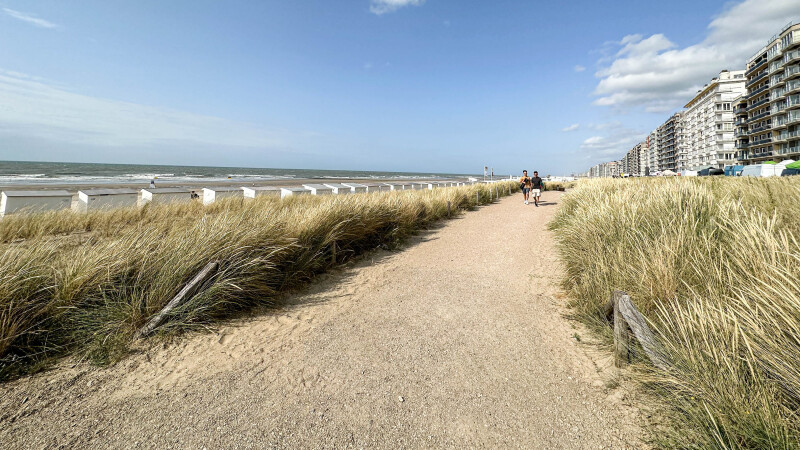
Groene zeedijk Westende genomineerd voor Prijs Publieke Ruimte
De nieuwe groene promenade in Westende is genomineerd voor de Prijs Publieke Ruimte. Met deze prijs beloont Infopunt Publieke Ruimte, het Vlaamse kenniscentrum voor openbare ruimte, de beste realisaties in de openbare ruimte.Projecten
Masterplan kustveiligheid
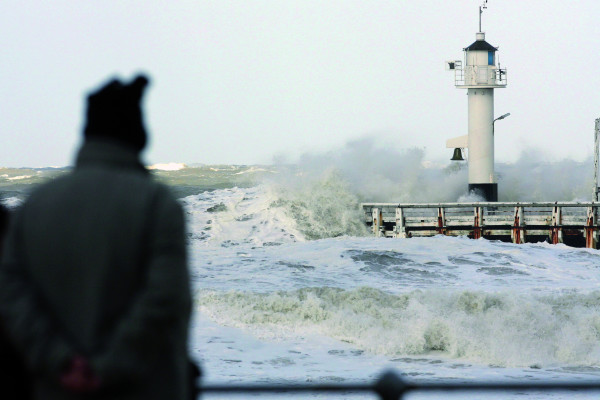
Een van de topopdrachten van ons agentschap is de uitvoering van het Masterplan Kustveiligheid. Dat bestaat uit een reeks maatregelen om onze kust te beschermen tegen zware stormvloeden en de stijgende zeespiegel. Om die uitdagingen het hoofd te bieden, zijn continue werken en inspanningen nodig aan onze kust.
Ontdek het Masterplan KustveiligheidKustweerbericht

Welk weer wordt het aan zee? Hoeveel kans is er op neerslag? Wat is de actuele windsnelheid, hoe hoog zijn de golven momenteel en wanneer is het hoog- of laagwater? In samenwerking met het KMI stellen de meteorologen in het Oceanografisch Meteorologisch Station dagelijks een gedetailleerd zee- en kustweerbericht samen. Vier keer per dag is er een update van het weerbericht.
Zowel professionele gebruikers zoals havenbesturen en beroepszeevaart als bewoners van de kust en toeristen gebruiken het kustweerbericht.
Naar het kustweerberichtVergunningsaanvraag
Plan je werken of organiseer je een activiteit op het openbaar domein? Vul dan het digitale formulier in via de knop hieronder.
Een vergunningsaanvraag is verplicht bij elk gebruik van openbaar domein voor privatief gebruik. Dat betekent dat je het openbaar domein exclusief voor jezelf gebruikt bijvoorbeeld om werken uit te voeren, activiteiten te organiseren of constructies te plaatsen, te wijzigen of te verplaatsen. De aanvraag heeft betrekking op privatief gebruik van wegen, waterwegen, zeewering en zeedijken.
Vergunningsaanvraag gebruik openbaar domeinStranden, duinen, dijken, jacht- en vissershavens, afdeling Kust zorgt voor de bescherming tegen het geweld van de zee, maar ook voor de bevordering van recreatie op en langs het water. Daarnaast brengen wij de zee en de Schelde in kaart en maken wij weerberichten voor de zee en de kust.
- Caroline Lootens, afdelingshoofd Kust
Waar vind je ons?
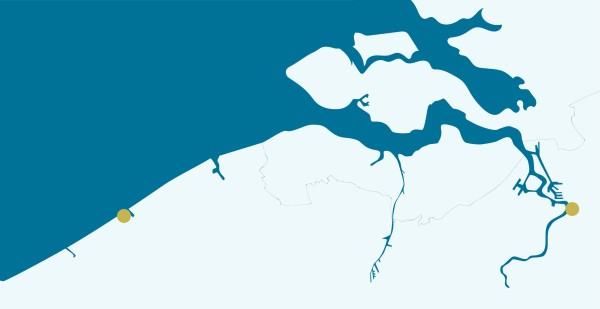
Afdeling Kust
Administratief Centrum
Vrijhavenstraat 3
8400 Oostende

